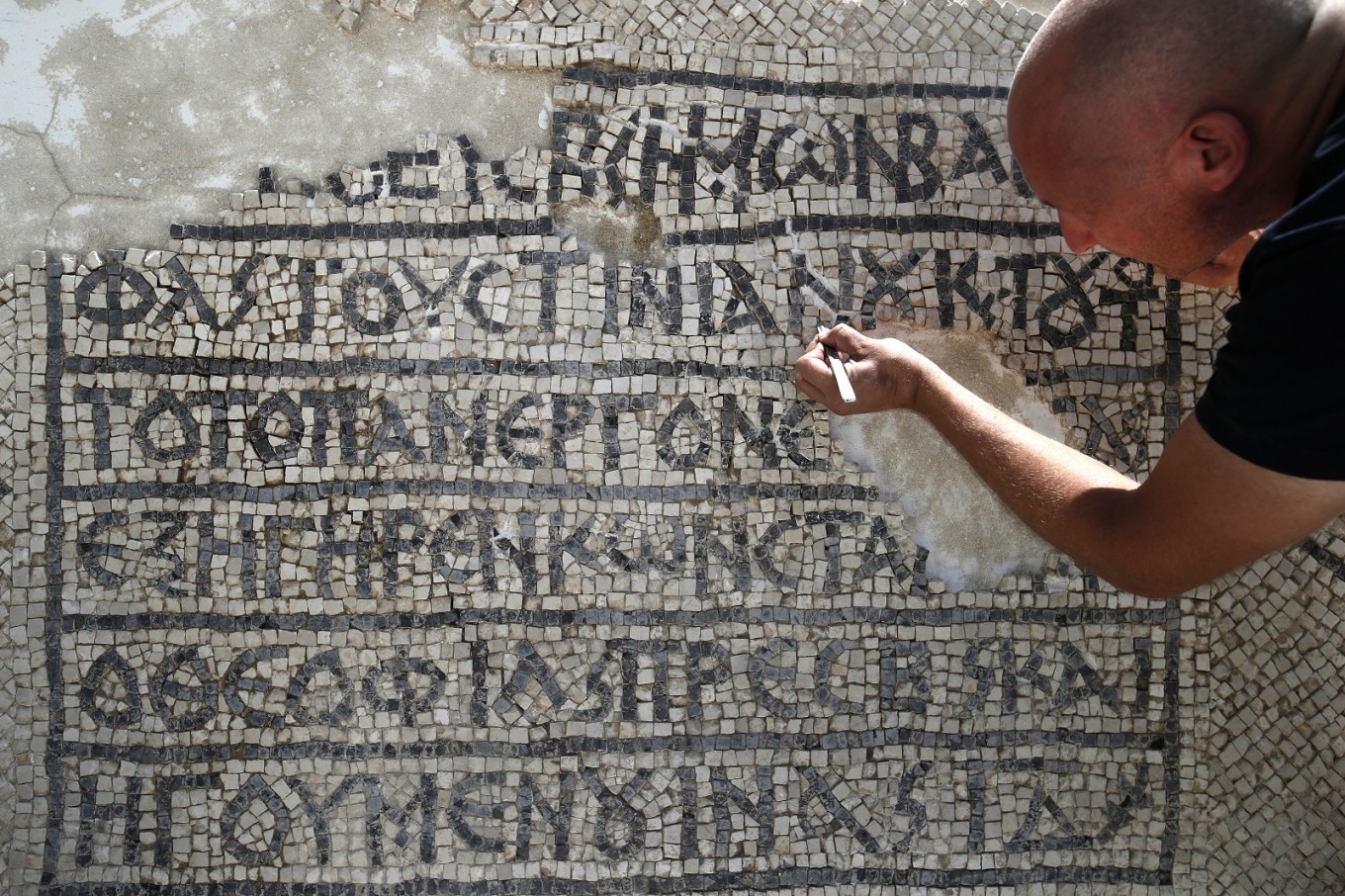Popular Reads
Top Results
Can't find what you're looking for?
View all search resultsPopular Reads
Top Results
Can't find what you're looking for?
View all search results'Rare' Byzantine mosaic revealed in Jerusalem's Old City
Change text size
Gift Premium Articles
to Anyone
I
sraeli archaeologists on Wednesday unveiled a 1,500-year-old portion of mosaic floor bearing the names of Byzantine Emperor Justinian and a senior Orthodox priest.
David Gellman, director of the excavation in east Jerusalem's walled Old City, said that while the area was rich in archaeological finds, few such inscriptions had been found.
"Direct text and letters from people back then are relatively rare," he told AFP.
The Greek inscription, dated at 550 or 551 AD, commemorates the founding of a building thought to be a hostel for pilgrims near the city's Damascus Gate.
Constantine, the Orthodox priest who founded it, was abbot of the Nea Church, dedicated to the Virgin Mary and the largest church in Jerusalem when it was built in 543 AD.
Gellman said the rectangular section of mosaic, 1.14 metres (3 foot 7 inches) on its longest side, "tells us about the way churches and monasteries worked back then. It makes this piece very unique".
Read also: Holy water: Jerusalem aquarium set to open
The Greek declaration, dated at 550 or 551 AD, commemorates the founding by the Orthodox abbot Constantine of a building thought to be a hostel for pilgrims, near the city's Damascus Gate. (AFP/Ahmad Gharabli)"It tells us that the abbot, the head of the big church in Jerusalem, was not only the head of that specific church," he said.
It was discovered intact about a metre (three feet) below street level as Gellman and his team made a routine exploratory dig ahead of the arrival of workers to lay communications cables.
"We were very close to closing the excavation when I noticed that a few of the mosaic stones, which were otherwise plain white, were at a different angle and seemed to be a little darker," he said.
"I cleaned up that small corner... and found that it was the bottom left corner of the inscription itself," he added.
"At that moment I realised that we have a very unique find here."
The Old City lies in east Jerusalem, seized by Israel in the 1967 Six-Day War and later annexed in a move never recognised by the international community.












